Marble Butter Sponge Cake
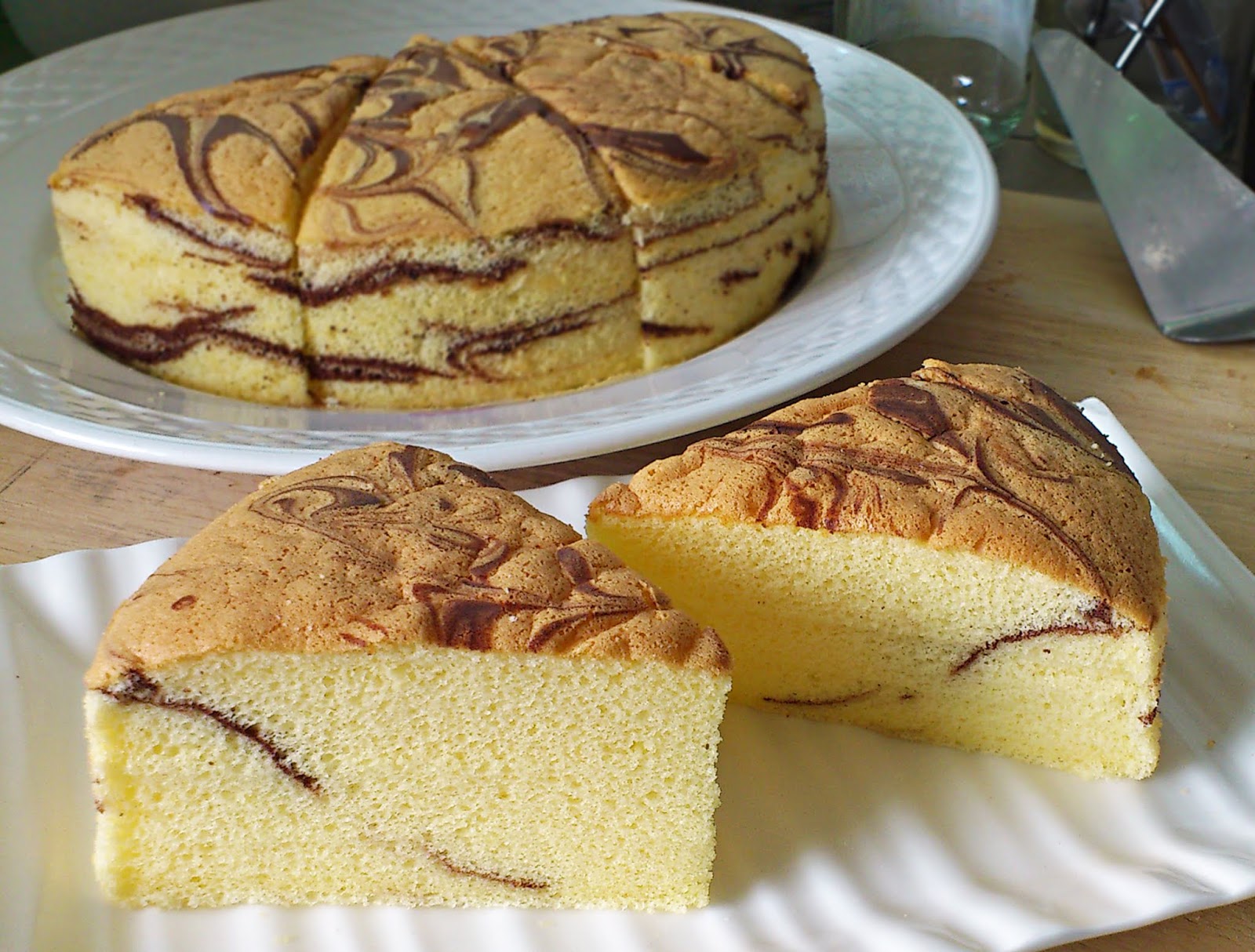
Tang mian is roux, made by cooking flour in bubbling hot butter.
Tang mian cake has the fluffiness of chiffon cake and the butteriness of butter cake. It has the best of two cake worlds but that’s not all. It is smooth, smoother than chiffon or butter cake could ever be.
Mixing bubbling hot butter with flour intensifies the butter aroma significantly. If butter were just melted and added to the batter, or it’s just beaten till fluffy, the cake would taste less buttery. Even beurre noisette isn’t as good.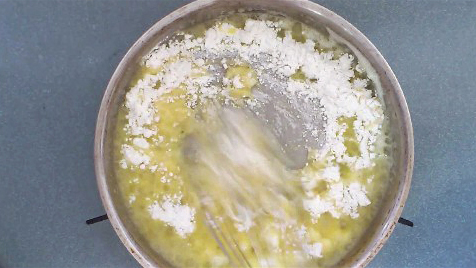
Cooking flour in hot butter makes the cake smooth. Why? Because when flour is coated with fat, it doesn’t form gluten when it’s mixed with non-fat liquids. No gluten is good news for cakes because gluten has a rough texture. In fact, pure gluten looks quite like sea sponge.
Once the roux is made, it’s transferred into a bowl and mixed with cold milk. The milk is absorbed by the starch in the flour, creating a thick paste that’s very hot. Unlike gluten which is rough, thickened starch has a smooth texture. That’s why tang mian cake is smoother than other types of cake (when it’s done right).
After the heat cools down a bit, a small amount of egg white is added to the thick paste. When this is done is crucial because it affects the consistency of the starch.
If the starch is too thick/thin, the cake won’t rise well. If the starch is just right, the cake will be very smooth.
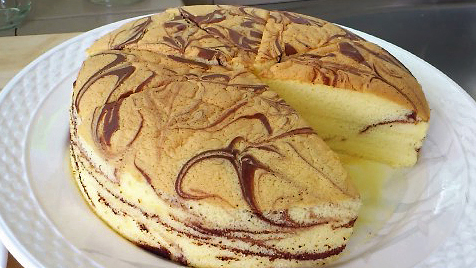
You know how good wine feels smooth in the mouth? Hey, cake can be smooth too!
After combining the roux with egg white, along with vanilla extract and salt, I add egg yolks. These are added one at a time so that they are mixed but not emulsified with the starch. The yolk batter mustn’t stick to the whisk. Otherwise, it’s too thick and the cake is doomed.
The bulk of the egg whites in the recipe are whisked, separately with sugar and cream of tartar, till firm peak stage.
If the batter is bubbly after whisked egg whites are added to the yolk mixture, it’s too thin.
Thin batter allows air bubbles to escape easily, so the cake won’t rise well. It also allows air bubbles to expand easily when heated, so the cake’s texture will be rough.
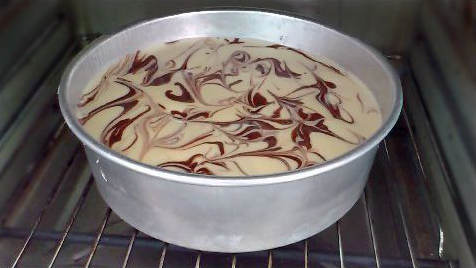
The batter is poured into the cake pan, slowly and from about 30 cm high. This releases big air bubbles in the batter, so the crumb will be fine and smooth.
If the batter falls in clumps when it’s poured, it’s too thick. Big air bubbles remain trapped in the batter, turning into unsightly holes in the cake when the baking is done. If the batter is too thick to rise well, the cake will be short and dense.
What makes the batter too thick? The roux is too hot when egg white is added, or the meringue is overwhisked. And vice versa would make the batter too thin.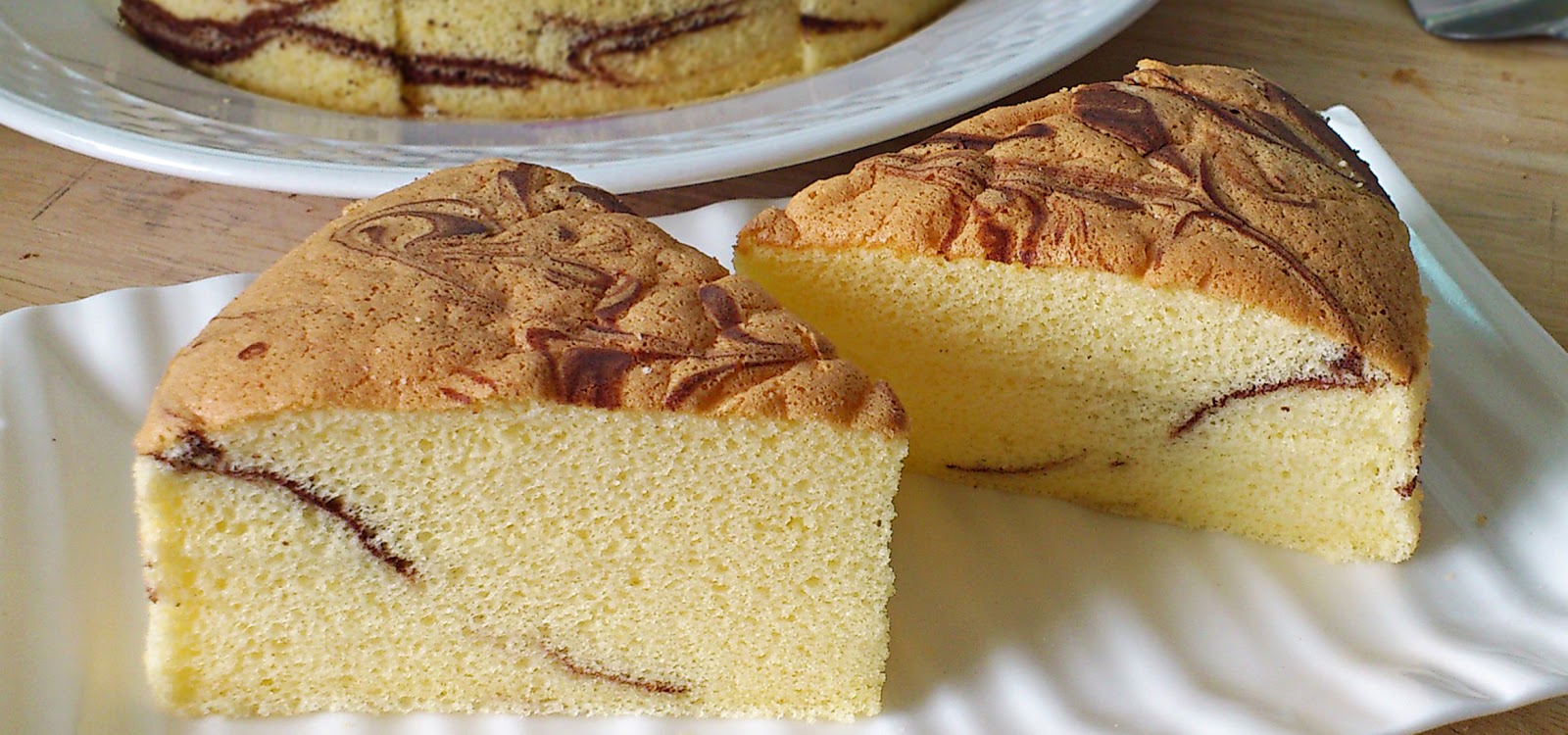
After baking, the cake must be inverted whilst it’s cooling down. If it’s underbaked, it’ll fall out of the pan and you can wave goodbye to its fluffiness. If the cake is overbaked, it’ll be too dry. When the cake is baked just right, it’s delightfully moist and fluffy. Timing is everything for tang mian cake.
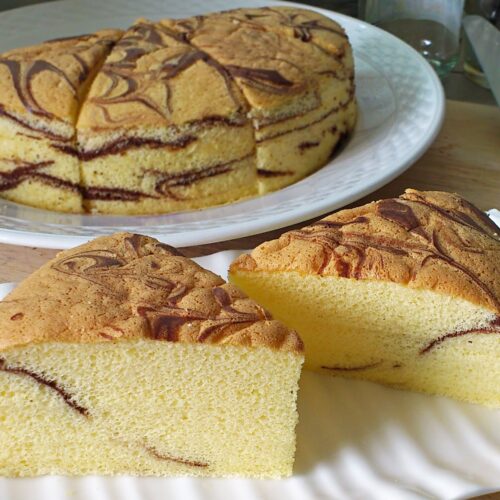
Marble Butter Sponge Cake
Video
Ingredients
- 60 g unsalted butter
- 45 g cake flour
- 30 g full-fat milk cold
- 1 tsp vanilla extract
- 1/16 tsp salt
- 20 g egg white
- 45 g egg yolks
- 105 g egg whites
- 1/16 tsp cream of tartar
- 50 g castor sugar
Instructions
- Preheat oven to 160°C. Measure and prep ingredients as detailed above. Line bottom of 18 x 6 cm round cake pan with 2 layers of parchment paper.
- Cook butter over medium-low heat, stirring with whisk, till just bubbling thoroughly. Turn off heat. (If your stove is electric, remove pan from stove.)60 g unsalted butter
- Add cake flour to butter. Stir till smooth. Transfer into mixing bowl with scraper. Add milk. Mix vigorously with whisk till just combined.45 g cake flour, 30 g full-fat milk
- Feel sides of bowl, which should be very hot. Wait till heat cools down a bit, about 30 seconds. Add vanilla extract, salt and 20 g egg white. Whisk till combined. Add egg yolks in 3 batches. Whisk till combined after each addition.1 tsp vanilla extract, 1/16 tsp salt, 20 g egg white, 45 g egg yolks
- Whisk 105 g egg whites on medium-low speed till frothy. Add cream of tartar. Whisk till thick foam forms. Gradually add castor sugar, still whisking. Continue to whisk till soft peak stage. Reduce speed to low. Whisk till firm peak stage (i.e. peak is hooked).105 g egg whites, 1/16 tsp cream of tartar, 50 g castor sugar
- Yolk mixture is now slightly bubbly. Stir with whisk to remove bubbles. Add egg whites in 3 batches. Mix with whisk till almost even after each addition. Scrape down and fold with spatula till just even, banging mixing bowl against worktop 2-3 times.
- Transfer 20 g batter into small bowl. Add 1 tsp cocoa powder. Mix thoroughly.
- Pour remaining batter into cake pan in 3 batches, slowly and from 30 cm high. After each batch, dot with cocoa batter and drag sharp end of skewer through dots. Jiggle batter till level, tapping pan against worktop 3-4 times.
- Bake cake in bottom of oven till batter doesn’t jiggle when shaken, 22-23 minutes. Move pan to lower-middle shelf. Increase temperature to 180°C. Bake till middle of cake doesn’t make squishing sound when pressed, about 10-12 minutes.
- Remove cake from oven. Leave on wire rack, inverted, till cool. Knock sides of pan till cake is loosened. Invert and remove pan. Invert cake right way up. Cut and serve.